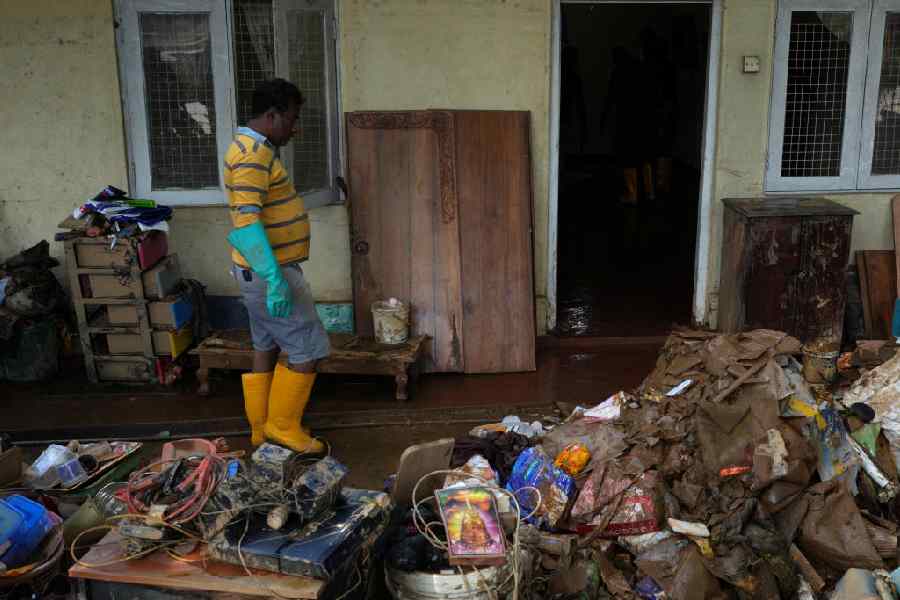 |
| Sashank Dalvi from Bhawan College, Mumbai, photographs a snake at the state zoo. Picture by S.H. Patgiri |
They are a band of four ? one from Assam and three from Mumbai.
Now what is this foursome doing in the jungles of Assam and Arunachal Pradesh? No, they are not on a trekking mission. Rather, their aim is to document every single species of snakes found in the region.
The four herpetologists ? Abhijit Das from Gauhati University, Sashank Dalvi from Bhawan College, Mumbai and Richa and Vinita from Ruia college, Mumbai, recently travelled extensively through the forests of the two states, where snakes are found in abundance.
Das met his three companions from Mumbai during a trip to that state last year and decided to work together to document the snakes of the region.
?The region is amazingly beautiful. We have decided to document the snakes as they are yet to be documented in a scientific manner,? said Sashank, who is also a photographer.
He said, ?Since we are all friends, it?s great fun roaming around the jungles, locating, identifying and jotting down details about the snakes.?
When asked about their uncommon passion the four shared the same view.
?Snakes are feared for their poison, but studies reveal that otherwise they are very tame reptiles,? said Das.
Cats, dogs, rabbits, elephants, even tigers and bears perhaps ? the list of animals which has caught the fancy of human beings is quite long. But the species which is breeding over a hundred eggs for the past two months under the watchful eyes of an eco-tourism society in Manas National Park is none other than a python.
Two 25-foot-long pythons (rock) are hatching eggs under the care of Manas Moazigendri Eco-Tourism Society members.
More than 35 baby rock pythons have been born and are being taken care of by the society members.
One of the major tasks of the eco-tourism society is to ward off elephants from destroying the baby pythons and the python eggs.
BTC deputy chief Kampa Borgoyary has also been waiting to welcome the new guests at the national park.
The members of the Society first noticed the rock python inside a hole of a tree and informed the forest authority.
Wildlife documentary film producer Gautam Saikia was subsequently asked to keep an eye on this Scheduled I species.
Considered the lone representative of Bengali folk dance in Tripura, Dhamail is currently facing a crisis. The beautiful dance number involves a clip-clap rhythm with a lilting motion, which alternately takes the dancer a step forward and back. This is accompanied by a high-pitched song with dholak beats in the backdrop.
Once very popular among Bengali communities in North Tripura and Bangladesh?s Sylhet and Mymensingh regions, Dhamail now has few practitioners as it hurtles down the road to artistic extinction. Ironically, other contemporary forms of folk dances, Santhal and Garba, have, meanwhile, shot to nationwide prominence.
According to sociologist Sujit Choudhury, Dhamail originated from Surya Brata, performed by Bengali women, which was similar to the Santhal dance.
Manipuri dance exponent Guru Bipin Singh has found similarities between Dhamail and Garba of Gujarat.
?Dhamail was once very popular in Sylhet and Mymensingh of Bangladesh, North Tripura and its adjacent Barak Valley region in south Assam,? said Pannalal Roy, a researcher on the region's cultural activities.
He said Dhamail performances were once common during all socio-religious functions, from weddings to births of babies, as Dhamail songs related stories about the love of Krishna and Radha.
?However, Dhamail is now virtually on the verge of extinction. Bengali women no longer perform Dhamail. I know several young girls who have never even heard of the dance form,? rued Roy.
In his book O Sajani Go, Roy has quoted several scholars and Dhamail singers, like Gurusaday Datta, Ashutosh Bhattacharjee, Nirmalendu Bhaumik, Hemanga Biswas and Mukundadas Bhattacharjee. He maintained that the dance form had originated in Sylhet.
The Tripura government?s department of culture is patronising Dhamail in its attempts to revive folk cultural forms.
Jyotsna Nath, a Dhamail artiste from North Tripura, has formed a professional dance troupe to keep the tradition alive.
It was an arty way of popularising science.
The Assam Writer?s Association organised a state-level five-day workshop on Popularisation of Science through Puppetry.
Funded by the National Council for Science and Technology Communication, New Delhi, the workshop is the first project taken by the organisations to enlighten the masses on the boon of science using puppetry.
Dinesh Chandra Goswami, a scientist at the Regional Research Laboratory, Jorhat, P.K. Das from Teok, R.K. Sarma and the who?s who of the science fraternity participated in the workshop as resource persons.
Thirty-two persons from various districts of the state were given hands-on training on various aspects of puppetry, including making and manipulations of glove-puppets and preparation of scripts for puppet drama.
As many as 70 glove-puppets and 12 scripts of puppet dramas were prepared at the workshop.
At the end of the workshop, shows were organised at Binapani Natya Mandir on themes like conservation, environmental pollution, tree plantation, superstition, witchcraft and others.
The drama, titled Tai Daini Nohoi (She is not a witch), composed by Rashmirekha Bora, received rave reviews.
 |
When the rest of Assam is reeling under floods, poachers are making merry. As flood waters inundate their habitat, the animals stray onto the national highway and become easy targets for poachers.
A Kaziranga National Park forest official said during floods they shift their camps to the highways to provide protection to the animals.
The official said seven poachers have been arrested in the past fortnight from Agaratali forest in the Kaziranga National Park.
Two poachers were apprehended by local residents on June 10. Their associates, however, managed to escape, leaving behind a rifle and 17 rounds of ammunition. The official said one of the arrested, Gopal Patgiri, has admitted his involvement in the killing of four rhinos in the reserve forest earlier.











